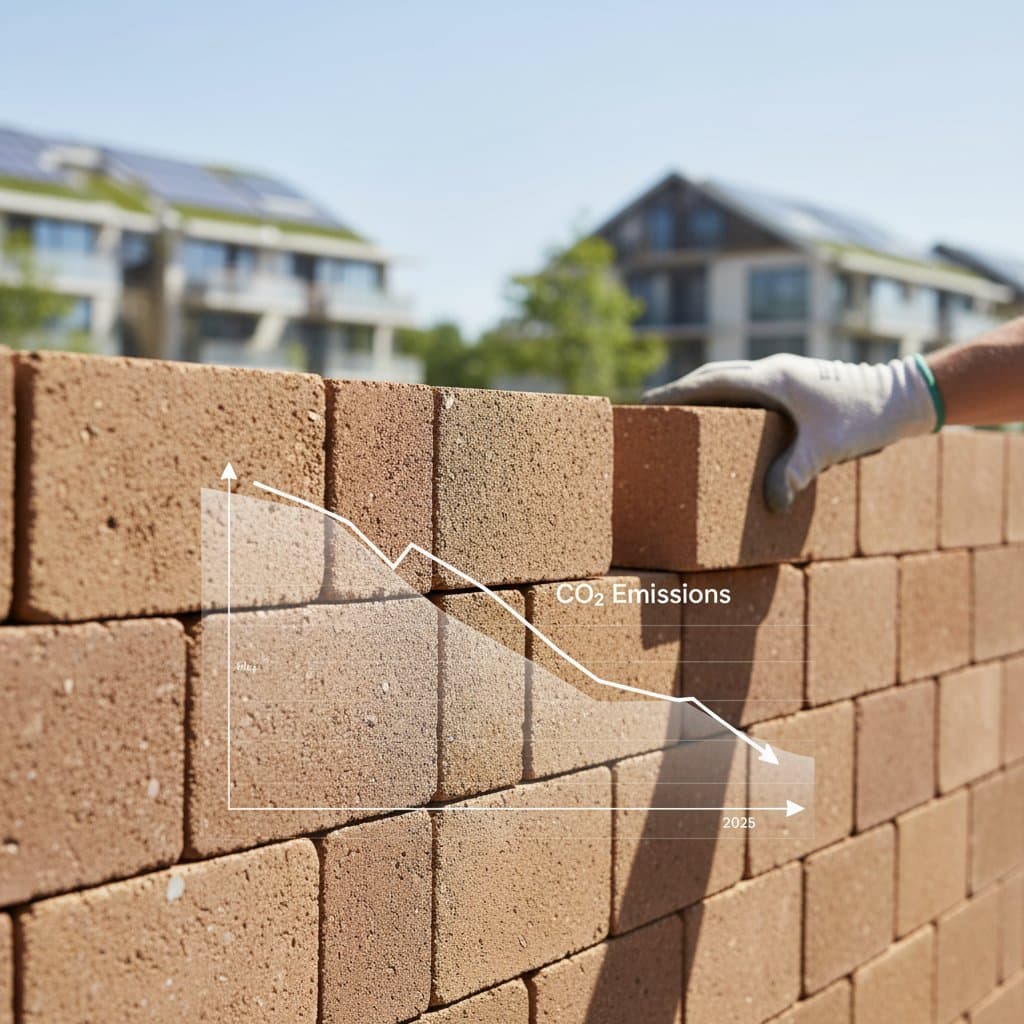Zero-Cement Bricks Set to Transform Construction by 2025
Essential Overview
Traditional cement production relies on energy-intensive limestone firing, which contributes significantly to carbon emissions. Zero-cement bricks, frequently referred to as geopolymer bricks, emerge as a viable alternative by utilizing binders that harden without such processes. These bricks deliver reduced environmental impact, greater longevity, and accelerated curing. Key factors influencing adoption include raw material procurement, precise curing management, and the need for builder education.
Quality Inspection Guidelines
Begin assessments of zero-cement bricks with straightforward visual and manual evaluations. Examine the surface for even coloration and straight edges; inconsistencies in texture or loose powdery layers often indicate inadequate mixture preparation. Gently strike the brick with a hammer handle; a resonant tone confirms solid internal structure, whereas a muffled sound suggests voids or excess moisture content.
Test stability by stacking several bricks on a level surface without mortar. Observe for any tilting or height discrepancies, as irregular shapes complicate installation and elevate mortar consumption. Apply a light water spray to a limited area; superior bricks exhibit gradual absorption without immediate darkening, signaling effective surface protection against moisture ingress over time.
Warning Indicators
- Fragile edges that crumble under minimal pressure
- Appearance of white efflorescence shortly after exposure to air
- Muted resonance in the tap test
- Development of cracks soon after curing completion
- Persistent chemical smell indicating unfinished binder reactions
- Absence of producer certifications or detailed composition records
Remediation Options and Estimated Expenses
Surface dusting in early stages responds well to application of a silicate-based sealer, with costs ranging from one to two dollars per square foot including materials and application. Slight variations in brick dimensions require adjusted mortar joint widths, which increase labor expenses by approximately ten percent. Batches exhibiting deficient curing or inadequate strength typically demand full replacement, as remediation proves more costly than initial substitution, particularly after integration into structures.
In fresh builds, zero-cement bricks command a premium of ten to twenty percent over conventional fired clay units on a per-brick basis. However, overall wall assembly expenses often equalize through minimized mortar requirements and expedited placement. Project delays from mid-build material changes, without prior mortar compatibility trials, pose risks; conduct bond strength tests with intended mixtures prior to large-scale purchases.
Strategies for Repair and Replacement
In existing structures, geopolymer bricks suit repairs to non-load-bearing infill or perimeter walls, eliminating the need for comprehensive overhauls. Refrain from combining materials in load-bearing walls due to differing responses to thermal and humidity fluctuations. When substituting degraded cement blocks, verify that the geopolymer variant meets specified compressive strength thresholds; uniform reconstruction ensures structural integrity if doubts arise.
Renovation efforts benefit from targeted use of zero-cement bricks in areas prone to weathering or salt damage. Their inherent chemical resilience yields substantial long-term advantages in marine environments or regions with cyclic freezing and thawing.
Assembling the Project Team and Workflow
Engage a structural engineer experienced in non-traditional binders at the outset to confirm load distribution and integration with conventional mortars or adhesives. Architects must evaluate visual harmony and insulation characteristics to align with design intent. Contractors require instruction in blending, sectioning, and environmental control during curing; an initial on-site demonstration assembly mitigates errors in full implementation.
Incorporate the manufacturer's technical expert in preliminary discussions to clarify requirements for temperature regulation, humidity maintenance, and safe handling. Dedicated project oversight incurs additional fees yet minimizes inefficiencies from improper phasing or material mismatches.
Prioritizing Implementation Areas
Focus initial transitions on high-exposure elements such as structural fillers, retaining structures, and outer facades, where geopolymer resilience against elements maximizes benefits. Defer superficial ornamental changes necessitating precise color coordination or bespoke forming unless ample design funds support them. Retain heritage features like lime-based joints or stone accents to preserve architectural identity amid core material upgrades.
Financial Planning and Phased Execution
Initiate with trial segments to validate handling and performance before broader application. Order phases according to vulnerability levels, commencing with below-grade elements, roof edges, and base walls that endure intense moisture challenges. Progress to elevated walls and landscaping features next.
Reserve interior divisions for final stages, contingent on fiscal and aesthetic objectives. Align mechanical and electrical installations prior to enclosing with masonry, as modifications to geopolymer elements prove more labor-intensive. Maintain uniform curing conditions and moisture levels throughout to achieve consistent appearance and performance.
Long-Term Preservation Practices
Geopolymer brick installations demand minimal routine maintenance, limited to periodic visual reviews. Employ gentle detergent solutions for cleaning, avoiding acidic agents that could compromise the material's composition. Monitor joint integrity at water runoff points and apply sealants promptly if erosion or staining emerges.
Document manufacturer specifications and formulation particulars for reference in expansions. This approach facilitates seamless future integrations, preventing visual inconsistencies or performance disparities. As adoption grows, zero-cement systems establish new norms for environmentally responsible construction.
